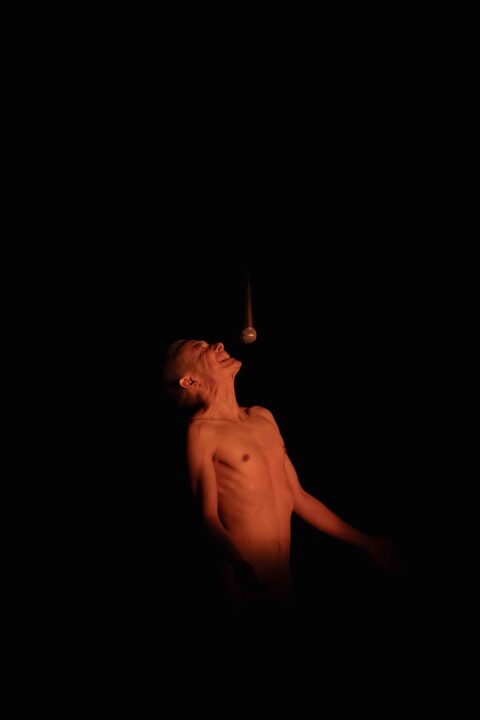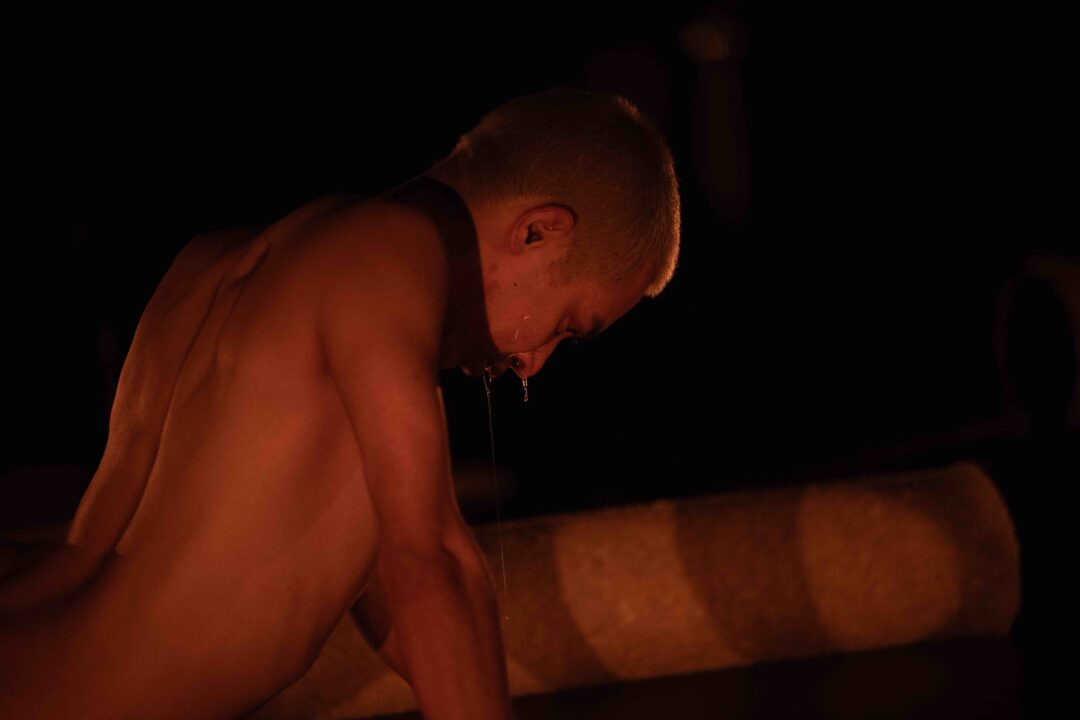Interview: Pablo Larios
Photos: Camille Blake


What could a sonic experience of a dried-up landscape sound like? And what form can a physical performance on ecological topics take on? Through somatic practices that produce sounds and cause the performer’s body to dehydrate, Camil Navarro connects her own body to the drying-up of a river in Chile that can no longer be seen, yet whose underground streams are still audible.
Pablo Larios: Tell me about your project, <i>Ecological Assemblage</i>.
Camil Navarro: I’m a performer and performance artist, working with my body and my voice. My project Ecological Assemblage is a performance inspired by issues being faced right now by people in Chile, specifically the Yoaycán and Petorca communities along the River Aconcagua in the north of the country. The Petorca River, on which these communities depend, has dried up completely—or at least that’s what I thought when I began the project and visited these places myself.
What did you learn when you spoke with people in this region?
After I went there to conduct interviews and do research, I learned something interesting. Despite the challenges faced by these river communities— many of whom have been forced to leave the region—I was actually wrong in assuming that there is no water in the river. In fact, the water is still there—you can still hear it. It’s underground. The river has dried up, but as an ecological entity, the river is still there; children born here can hear the river, just not see it. That was the catalyzer of this project, which builds on the connection between sound and movement and the body’s own hydrological processes.
How did this shape your approach to the project?
I began this project by doing two performances in Santiago de Chile. One performance was titled Ecological Ghost. For this sound performance, which I developed together with a sound artist, I made somatic exercises inspired by the notion of a “hybrid body,” sometimes involving becoming dehydrated. I performed exercises of repetition and movement for which I repeated certain bodily gestures, resulting in the emergence of sounds. The sound artist I worked with constructed interferences and patterns and modified the sound of my voice to create an ecosystem based on these movements.
How have you worked with your Forecast mentor, Ute Wasserman? What are the other ideas that influenced this project?
Ute is very interested in sound technologies, and her works are inspired by ecological beings and entities and sounds from nature. Another influence was the writer Timothy Morton, especially a book called Humankind: Solidarity with Non-Human People. There, he writes about hyper-objects and the big mass of ecological entities as beings that you cannot see and touch directly but can only perceive their manifestation in space and time. Working with that idea, I decided to illuminate just parts of my body— turning into an instrument and an ecological being, acting as a voice recorder.
What’s the link, for you, between sound and movement?
Here, movements and gestures don’t just come from anywhere—they come from a hydrological process that is a manifestation of the water that’s a part of my body, as a surface. In my work on the body’s movements, I have explored three iterations, such as evapotranspiration—letting out the amount of water in my body. Through these exercises, sounds emerged in an undetermined way. It was the body’s hydrological process.
How was this work realized or continued?
At its inception, it was a twenty-minute performance—I wanted to make something that people could visit as a contemplative experience, as if they were entering a landscape. That idea is still there, but with Ute we are now working on a composition with sounds. I take sounds and activate them with different voice recorders; these are related to the sound of my body and my voice, resulting in an indeterminate structure.
What do you want viewers to take away from your work?
I want viewers to enter a sonic experience of a dry landscape. I introduce the audience to a text that provides context on the project and this ecological issue—showing, for instance, how it’s connected to the extractive practices of the avocado industry in Chile. Avocado manufacturers project an image of lush, beautiful gardens; yet just beyond that, there’s a dry territory that’s been dried out of water. The people who live there continue to do so because they think they belong to the land; yet there is no water anymore, and tanker trucks need to be brought in to deliver drinking water. By conveying the appearance of that landscape to the audience, I want to make them understand these issues.
Pablo Larios is a writer, editor, and an international editor at Artforum. He lives in Berlin.
You are currently viewing a placeholder content from Vimeo. To access the actual content, click the button below. Please note that doing so will share data with third-party providers.
More Information